From Lost to Found: My Healing Journey with Birds
This is a guest post by Nidhi Solanki
For as long as I can remember, bird calls have always attracted me. It feels, in retrospect, that I’ve always had a connection with them. During the COVID lockdown, a pair of Red-vented Bulbuls built their nest on a Golden Pothos plant close to the ceiling. My sister and I watched the hatchlings, and the parent bulbuls care for them; I even recorded videos to capture their lives. I enjoyed watching them, but it felt like I hadn’t fully appreciated or understood the importance of this connection at the time.
It wasn’t until I went through a challenging phase in my life, where my mental health was in disarray and I struggled to find motivation, that I realised how vital birds and nature were to my well-being. This journal is about how I discovered the significance of birds in my life and how they helped me find solace during that period.
Journal Entry 1: 22 April
My First Encounter with Birds
I was going through a challenging phase where my mental health was struggling. I felt no motivation in life. I would wonder, “What is the purpose of life? Why am I living?” Nothing much was helping me. I had tried a lot of things, but the hollowness was getting deeper. I left my job and came to live with my parents for a while. After a month, I ventured on a two-month journey to southern India, where I met different people working in the field of education. I was visiting places close to nature. I spent a lot of time in nature, and I quickly realised that being close to nature made me feel better. I would go on walks, look at different trees and animals, and listen to birds.
During my stay at The Centre for Learning School (CFL), I met someone who introduced me to a smartphone app that helps identify birds by their calls—Merlin Bird ID. I found it fascinating that I finally had a tool to identify the birds around me.
One day (after my return to Bhopal), I came across a course on birds by NCF on LinkedIn called The Wonder of Birds. I found the course very interesting and enjoyed learning about birds. It felt like a whole new world to me. I also read how watching birds can help dealing with depression, and by then, I had already developed an interest in observing them. I could relate to my own experience of going to parks and hearing their chirps made me feel better.
I decided to immerse myself into birdwatching. After researching and talking to a few people, I bought a pair of binoculars. I also learnt a few terms related to habitats, such as wetlands, grasslands, and woodlands. Then I decided to go to a nearby lake, a place familiar from my morning walks, to observe birds.
On 20 April, I went to this location with my binoculars. The area had a lovely road surrounded by shrubs, trees, and water bodies. As soon as you enter, you hear many birds, though often you can’t see them as they blend in with the surroundings. I used my Merlin to identify the birds by their calls, and I started noting down the details once I spotted them through the binoculars. Some birds were silent, making it difficult for the app to identify them. Therefore, I noted their physical characteristics and conducted online research on them.
I figured out a few ways to identify birds:
- When you hear the calls, use the app to see suggestions. To confirm, look at the bird’s physical appearance and search online to match the description. I confirmed many birds this way.
- You can also note the bird’s physical characteristics and search for them in Google. Sometimes you’ll find the bird’s name through images, and sometimes you won’t.
- When these methods didn’t work, I took a picture through my binoculars and searched for the image on the internet.
There are also times when I just heard the calls but didn’t see the bird. I haven’t included those in my list.
On the first day, I observed ten birds. The process of watching birds was so immersive and focused that it felt like meditation.
I remembered watching a tiny, olivish green bird, and after matching its call, I discovered it was a female sunbird. When I finally identified the bird and learnt more about it, I was elated. Based on my ornithology course and research, I knew that sunbirds are among India’s smallest birds.

Photograph by Nidhi Solanki
I also learnt that sunbirds have long bills to suck nectar from flowers. It seemed that there’s logic behind everything in their world. In some cases, the colours they have help them camouflage. I found that male counterparts are generally much more attractive than females. I knew this about animals in general—males are often more vibrant or visually striking compared to females. Interesting, right?
I yearned to see a male sunbird. I searched and discovered that the male is a Crimson Sunbird. The next day I tried to spot it but couldn’t find it. Instead, I encountered a Purple Sunbird. I’d seen it before, but I didn’t add it to my list because I couldn’t see it properly. However, the next day I saw a pair of olive green and iridescent purple coloured sunbirds hanging together. This made me realise that must be partners. I did more research and discovered that the olive green sunbird is a female counterpart to the Purple Sunbird.
Through all this, I went through the process of observing, listening, and researching. It made me feel whole.
Similarly, I did a lot of research on Ashy Prinia. What particularly attracted me to this bird was its constant, high-pitched, melodious call, as if it were calling me to pay attention. So I did. I found this little bird so cute, with its tail pointing upwards, helping it balance while moving. I watched it for a long time and also tried to click a picture using my phone and binoculars. I still have a long way to go in terms of photographing birds through binoculars.
The drongo is another bird that I find fascinating. I had read that it can mimic other birds’ calls and could often confuse other birds and humans. When I personally encountered it, I noticed that it was using two different calls. I used the app to identify it, but it suggested a different name. Only when I looked closely did I notice its complete black body and forked tail.
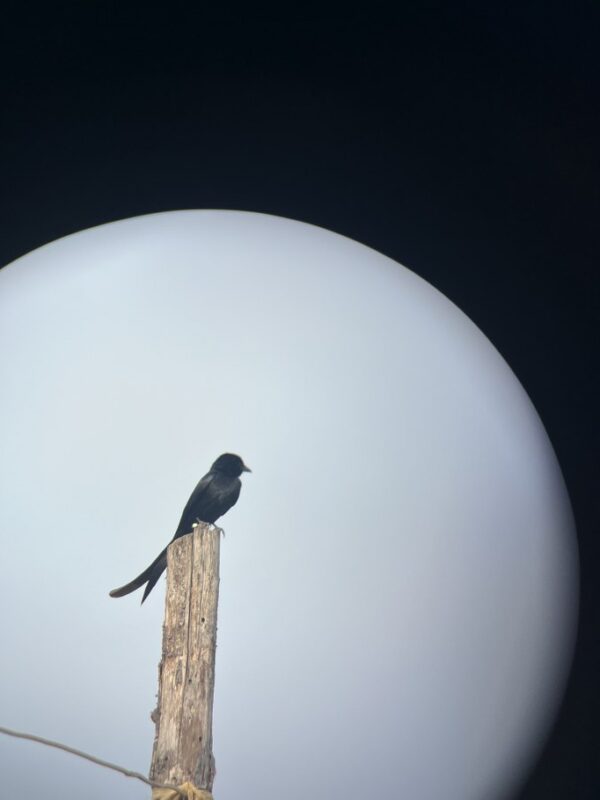
Black Drongo. Photo by Nidhi Solanki
The next intriguing bird I encountered was the Indian Robin. Its constant calling, much like the Prinia, quickly caught my attention. However, unlike the Prinia, I found the Indian Robin in the same spot on both days, calling persistently. What really stood out was its upright tail, seemingly defying gravity. I wonder why its tail is like that?
I spotted a pair of beautiful, multicoloured birds perched silently on a tree branch. Unsure of their names, I took pictures to later identify them. After some research at home, I confirmed they were Asian Green Bee-eater. I also found out that most bee-eater species are monogamous, staying with the same partner for life, much like Hornbills. Staying with the same partner for life is something often portrayed in movies, but these birds are teaching me lessons that no human ever could.
I first spotted an Oriental Magpie Robin for the first time in the jungles of Tadoba-Andhari Tiger Reserve, and again at my home, where it appeared on our garden fence. I haven’t done much research on it yet.
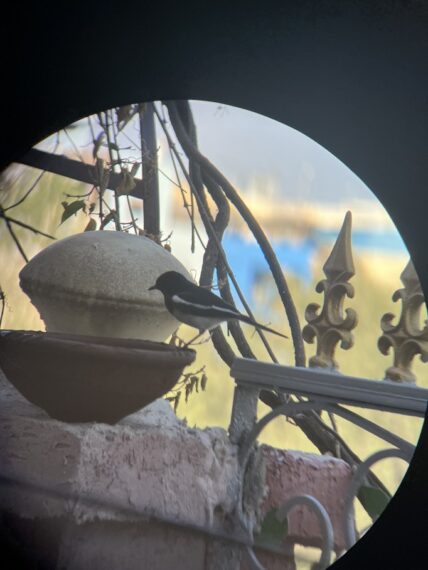
Oriental Magpie Robin. Photograph by Nidhi Solanki
The next bird I observed was a wetland species—the Wood Sandpiper, strolling near the water area in search of food. I spotted them in two different locations, both near water bodies. They seemed comfortable around other birds.
I also saw wild ducks swimming and foraging. While they appear to move effortlessly on the surface of the water, they’re actually working hard underwater.
The egret, on the other hand, appeared so composed. I am amazed by how they stand so still, simply being.
I also encountered a group of wetland birds that were white and pink. Although I knew they were not flamingos, it took some research to identify them as Painted Storks.
Laughing Doves and House Sparrows have always been so common and familiar to me that I never paid much attention to them until recently. Now I can distinguish between male and female sparrows. During the course, I learnt that a deliberate effort to eradicate sparrows in China nearly led to their extinction, as they were considered pests that could eat grain. On the other hand, laughing doves exhibit monogamy and typically form pairs. Though I don’t know much about them, I find the chessboard-like pattern on their throats very attractive. In contrast to other birds, do isn’t much difference in the physical appearance of male and female Laughing Doves. However, if a male and female of the same species show differences in appearance, such as variations in size, colour, or markings, they are considered sexually dimorphic (just like the Purple Sunbirds).
Kingfishers are among my favourite species, and I’ve had the pleasure of seeing them many times. I find their bills quite unique and their colours beautiful. The ones I have observed are White-throated Kingfisher.
Nightjar is the only nocturnal bird I have seen, or more accurately, heard. I recognised it by its unique call and the fact that it’s the only bird I have heard at night, aside from the occasional lapwing. It doesn’t look adorable like some other birds, and due to its colour and shade, it can easily blend into its surroundings.
I enjoyed watching birds so much that I went to a different pond in the evening of the same day, and I brought my mother along. Although we didn’t have much time before dusk, we managed to observe some wetland birds.
So far, I have observed 15 different birds and am keeping a diary with details about each one.
Journal Entry 2: 23 April
The Wise Elder
Yesterday, I visited Shahpur Lake with my mother, and one bird that particularly caught my attention. This large bird appeared almost majestic-graceful and composed as it stood still for minutes. Its long feathers moved gently, almost as if someone had draped a fur coat over them. It gave off the impression of a wise elder from a clan. After a few minutes, it took flight. It was a Grey Heron.
I spotted a flock of birds perched on a tree! Although I’m not certain, they might have been Indian Cormorants—they were too far away for a clear view. I also spotted Black-winged Stilt, for the second time.
Journal Entry 3: 24 April
A Game of Hide and Seek
I’ve attempted to see barbets many times. The first time was when I was in CFL. Using the Merlin app, I recognised the call as coming from a barbet, but despite spending a considerable amount of time hoping to catch a glimpse, I was unable to do so. I couldn’t. A couple of days ago, as I began birdwatching more earnestly, I tried again, but even with binoculars, I failed to spot it. Frustrated, I went home and researched barbets, learning that they typically perch on the topmost branches of trees.
I visited a park in Bhopal that I used to go to as a child. After a few minutes of walking, I heard the barbet’s call again. Eventually, I found the tree where the call was coming from, but it confusing—standing directly under the tree made it seem like the sound was coming from elsewhere. I tried positioning myself where the call was the loudest, but still couldn’t spot the bird. It was a Peepal tree, and I knew it would be challenging since the barbet stay perched on the highest branches and are often obscured by leaves. They also blend well with their surroundings, making them even harder to see. However, I was determined not to leave without spotting it.
Using my binoculars, I observed a tree with lots of bird activity, including species I had not seen before. Among them, I noticed a bird that appeared white through the binoculars. Though I initially doubted it was the barbet, upon closer inspection, I was pleasantly surprised to find that it was indeed one. I felt elated. Although it was too far away for a clear view, I was finally able to see it.
One interesting fact I recently learnt about the Coppersmith Barbet is their role in tree growth. By consuming fruits and defecating seeds, barbets aid in tree growth.
Journal Entry 4: 25 April
Delightful Kingfishers and Bee-eaters
This morning, I spent some time observing kingfishers and bee-eaters. The kingfisher I watched stayed in one spot for several minutes, as long as I was observing, before moving to a nearby branch on the same tree. I heard its call for the first time today—it was melodious.
I saw 2 or 3 kingfishers, though they weren’t together. At one point, they seemed to be communicating with each other through their calls, though I’m not entirely sure.
On the other side, bee-eaters were flying one after another. Their bodies, with wings wide open, looked uniquely beautiful from below. They were also vocal, producing calls or singing. I have seen bee-eaters be cheerful and vocal during the mornings, and today I spotted three of them.
Journal Entry 5: 22 July
Water for Birds
Birds always visited our house, but it was only when I started observing them more closely that I began to see their needs. During the summer, when water was scarce, my parents and I placed water in earthen bowls. Gradually, more and more birds began to visit. We also put out grains and experimented with different types until we discovered that they preferred rice. The delightful chaos of their presence brought so much joy to our home, and I missed their sounds whenever they weren’t around.
The Wonder of Birds course had a suggestion of using ‘bird baths’, so we set up large cement containers filled with water in our small garden. However, I had to leave Bhopal for some work, and my parents were away as well. During our absence, the birds stopped coming. When I returned, I was disheartened to find not a single bird was around. The house felt lifeless without them.
Determined to bring the birds back, I cleaned all the bowls, refilled them with water, and put out rice. Days passed with no sign of them, and when I had almost lost hope, the birds began to return. Slowly, their numbers increased, and now around 30-40, including sparrows, doves, and robin, come to visit our house regularly.

Oriental Magpie Robin. Photographed by Nidhi Solanki
Journal Entry 6: 22 July
Visits from the Master Architect
Usually, sparrows and doves are the regular visitors to our house. But one day, I noticed a bird that stood out—a bright yellow one. It was shy, and the moment it caught me watching, it flew away. I could not photograph it. A few days later, I spotted it again and observed it closely. I noticed it had a yellow body and head, but its feathers looked similar to those of sparrows. I searched for it in my booklet, but I couldn’t find a match. I tried searching on Google using the description but still came up empty.
I typically use two methods to identify an unknown bird: searching descriptions online or taking photos through binoculars. The first method didn’t work, and the bird was too shy for the second. Although I managed to capture video from afar, it was clear enough to identify the bird. Today, I saw three of these birds. Determined to finally identify them, I quickly grabbed my binoculars from the next room. Unfortunately, two of them flew away before I could even get set up, and the last one disappeared just as I raised my binoculars. Frustrated but persistent, I reached out to someone from NCF for help and kept searching online with the description. After some time, I finally found it—at the exact same moment I received a response from the person I had contacted.
It was a male Baya Weaver! Can you imagine? I was so excited—I had never seen a Baya before! This was a new addition to my list. They’re famous for their creative nest-building skills, and now I’ve had the pleasure of spotting one.
Journal Entry 7: 22 July
Knock, Knock! Who’s There?
During my stay at CLF, I had an interesting encounter with a woodpecker. One morning, I was on my way to the morning assembly, which was still some time away. I heard a peculiar sound. I looked around but saw nothing, though the sound of something striking caught my attention. Intrigued, I felt compelled to investigate, sensing that something interesting was behind it. I kept searching but found nothing. Then, I listened more closely and realised it sounded like something hitting a tree. Following the sound, I spotted a bird pecking at the tree. A quick search on the internet revealed that it was a woodpecker!
This discovery was remarkable to me. I went from not knowing to understanding or acquiring knowledge, purely through observation—learning in the most natural way, without any guidance, books, or resources. It was the moment of pure discovery.
Throughout my journey of observing birds, I have had many such moments, and each time I made a new discovery, I felt elated and excited. The experience of being with birds made me aware of many things. It made me more observant and mindful. Now, I see birds wherever I go. Since birds have become an important part of my life, I wish to learn more about them. My goal is to observe as many birds as possible. To deepen my knowledge, I want to go birdwatching with experts. I believe that birds have made me more sincere and focused on life. Previously, I thought that one needed to be an expert to appreciate birdwatching, but now I believe that all you need is a genuine interest in them. Birds make our world so colourful and alive, yet many of us go through our entire lives without noticing them. How much are we missing out on, I wonder!
I utilised the following resources to learn about birds:
- eBird.org
- Merlin Bird ID
- Binoculars
- The Wonder of Birds
Nidhi is an amateur birdwatcher who is eager to connect with other birdwatchers. If you’re also into birding, feel free to write to her at solankinidhi34@gmail.com or connect with her on LinkedIn. She works in education and believes in a holistic approach to learning, encompassing understanding oneself, others, and nature.
Header Image: White-throated Kingfisher Halcyon smyrnensis © Hari K Patibanda

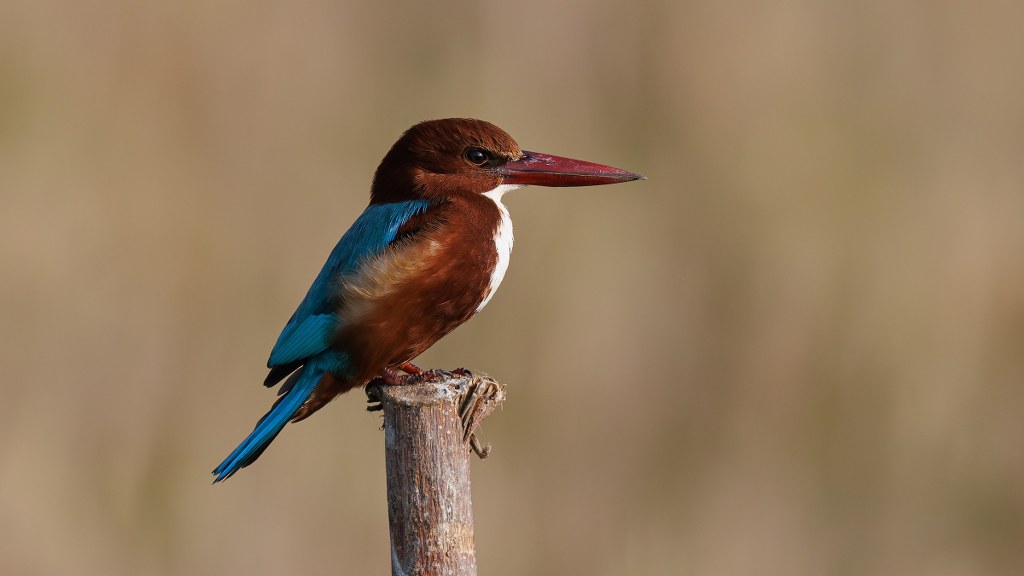
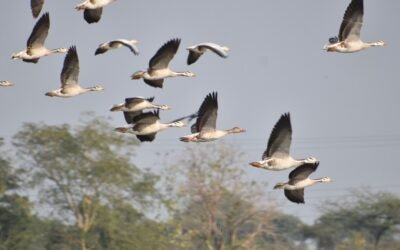
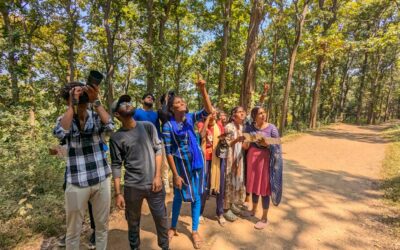

Hi Nidhi! I can totally relate to your bird watching experience as I too had found solace in watching birds during difficult times and I continued observing birds since then. It is very fulfilling and joyful to watch these beautiful and intelligent creatures ❤️
You can find the bird videos that I have recorded on my YouTube channel: https://youtube.com/@glimpsesofjoy5401?feature=shared
Hi Anuprita,
It’s so good to know that you resonate with my experience. Yes, I also find birds to be both effortlessly “Free” and intelligent.
❤️
Well written, best wishes…wishing you Happy Birding
Very well written. Thank you for sharing your experience.
Connecting with nature always helps in gaining mental peace. Thank you for sharing your experience. Got to know more about birds.
The way birds, with their grace and freedom, can remind us of life’s simple joys and resilience is so powerful. This post is a reminder of how deeply nature can affect our mental and emotional well-being.
Regards,
Arul
https://birdshop.in/
This was such a heartfelt and inspiring read! It’s amazing how birds can have such a profound impact on our well-being. Your journey beautifully highlights the healing power of nature and the deep connection we can develop with the avian world.